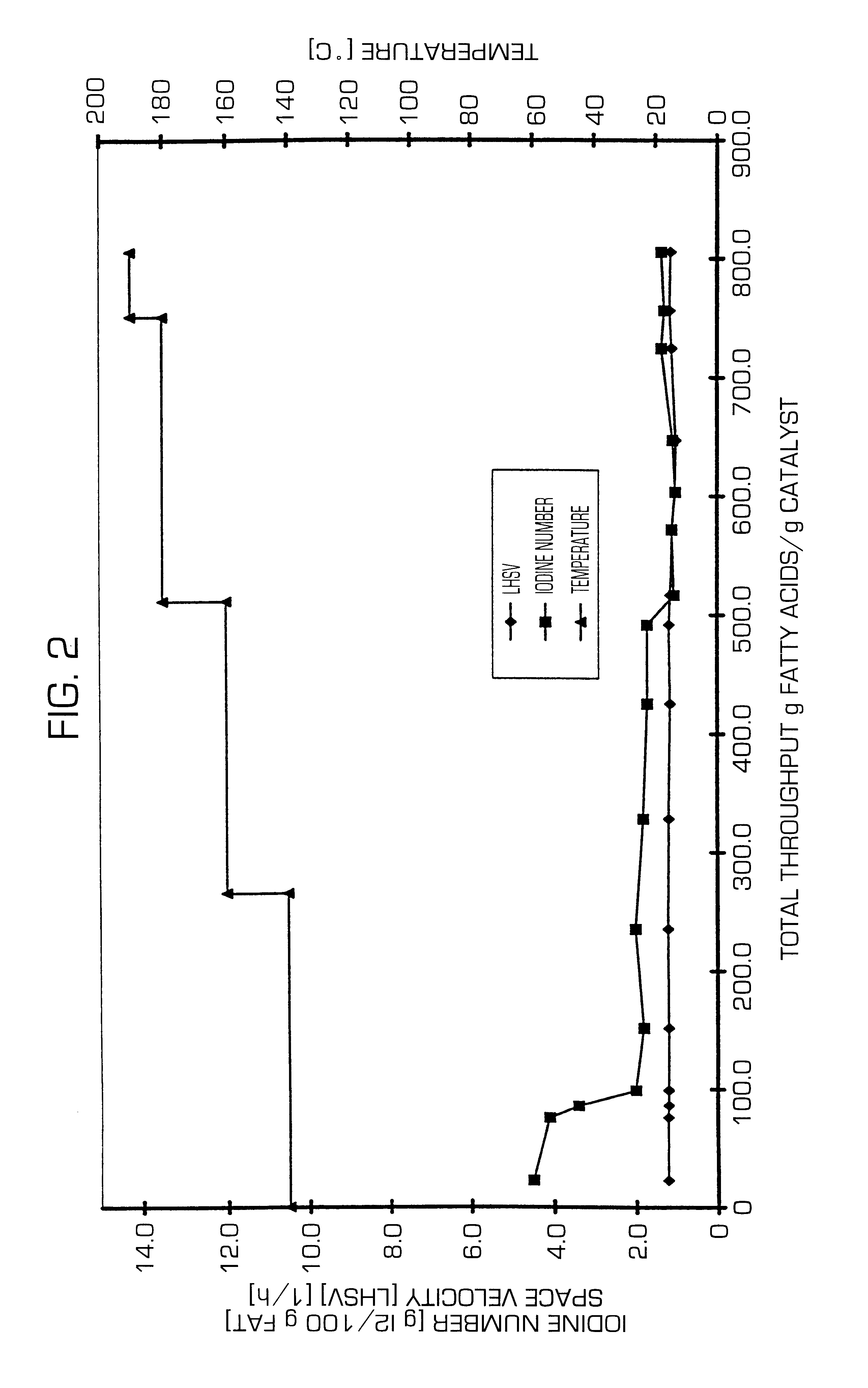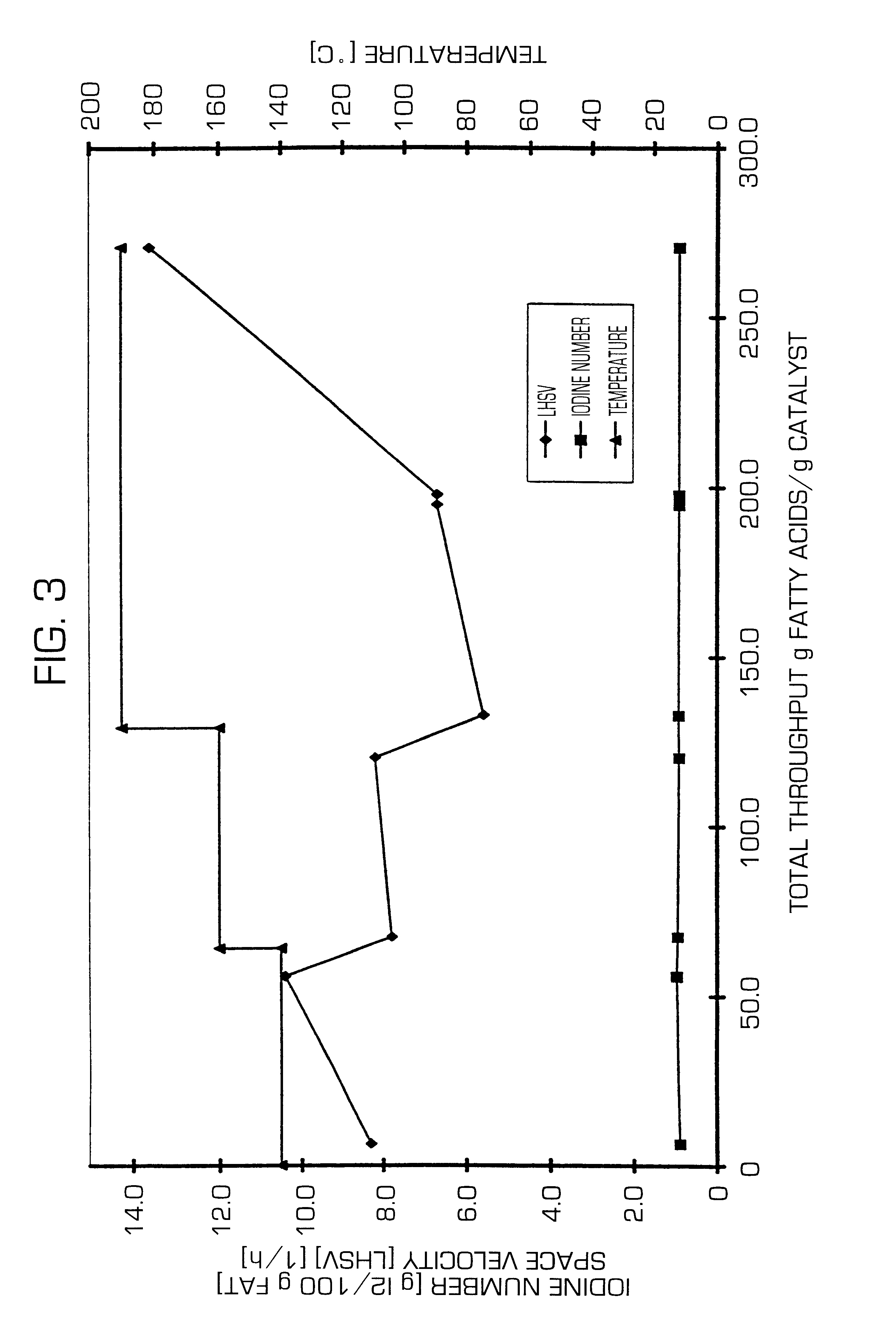Process for the continuous catalytic transformation of organic compounds
a catalytic transformation and organic compound technology, applied in physical/chemical process catalysts, organic reduction, fatty-oil/fat refining, etc., can solve the problems of affecting the catalytic reaction, unwanted and undesired in the final product, and the deactivation of the hydrogenation catalysts faster,
- Summary
- Abstract
- Description
- Claims
- Application Information
AI Technical Summary
Problems solved by technology
Method used
Image
Examples
example 1
The hydrogenation of crude fatty acid, as per the process according to the invention, with integrated purification of the crude fatty acid by extraction with a CO.sub.2 / propane mixture was carried out under the following processing conditions
For the hydrogenation, a 1% Pd / OFP catalyst was used. Pd / OFP stands for a palladium catalyst on a carrier made of an organo-functional polysilaxane as per example 2 of the patent document DE 44 05 029 C2 which is relied on and incorporated herein for that purpose. In this patent document, the hydrogenation characteristics of this catalyst in supercritical media and its physical-chemical characteristic numbers are described.
The above specified space velocity (LHSV =Liquid Hourly Space Velocity) is related to the employed catalyst volume of 5 ml.
Table 3 and FIG. 2 describe the course of the procedure. An iodine number of 1-2 was achieved up to a flow total through out of 800 g of fatty acid per g of catalyst. Through increase in temperature after...
example 2
and the comparison examples 4 through 6 clearly show that fat raw material, such as fats, oils, fatty acid esters and free fatty acids can be outstandingly hydrogenated with condensed, that is, liquefied, fluids in the subcritical state. The condensed fluids are used in this way as solvent for the fat raw materials. Suitable for this are, for example, the fluids carbon dioxide, propane, ethane, butane, dinitrogen monoxide or mixtures thereof.
As Table 7 shows, in the dissolution of the ethyl ester of linoleic acid ethyl in condensed subcritical propane, comparable hydrogenation activities as in the conventional trickle bed hardening or with the super critical hydrogenation are achieved as per WO 95 / 22591, however, at a considerably reduced pressure.
The solubility of the employed raw material in the solvent can also here be increased by the use of modifiers. The reaction product is separated after the hydrogenation through pressure release, or temperature increase, of condensed subcri...
PUM
| Property | Measurement | Unit |
|---|---|---|
| Pressure | aaaaa | aaaaa |
| Angle | aaaaa | aaaaa |
| Temperature | aaaaa | aaaaa |
Abstract
Description
Claims
Application Information
 Login to View More
Login to View More - R&D
- Intellectual Property
- Life Sciences
- Materials
- Tech Scout
- Unparalleled Data Quality
- Higher Quality Content
- 60% Fewer Hallucinations
Browse by: Latest US Patents, China's latest patents, Technical Efficacy Thesaurus, Application Domain, Technology Topic, Popular Technical Reports.
© 2025 PatSnap. All rights reserved.Legal|Privacy policy|Modern Slavery Act Transparency Statement|Sitemap|About US| Contact US: help@patsnap.com



